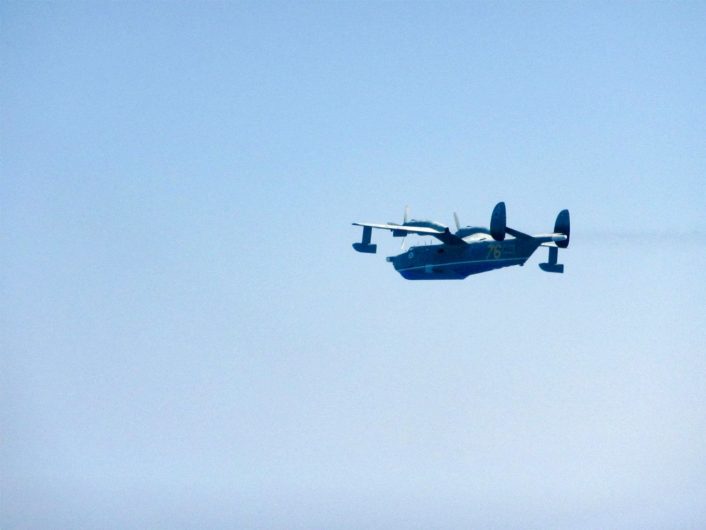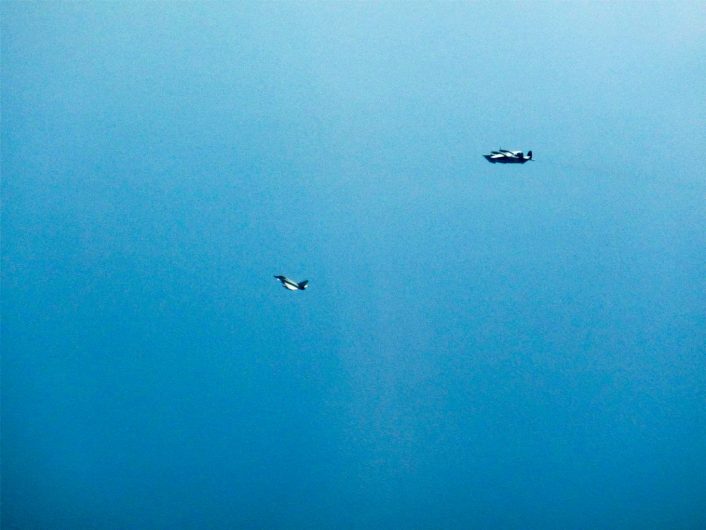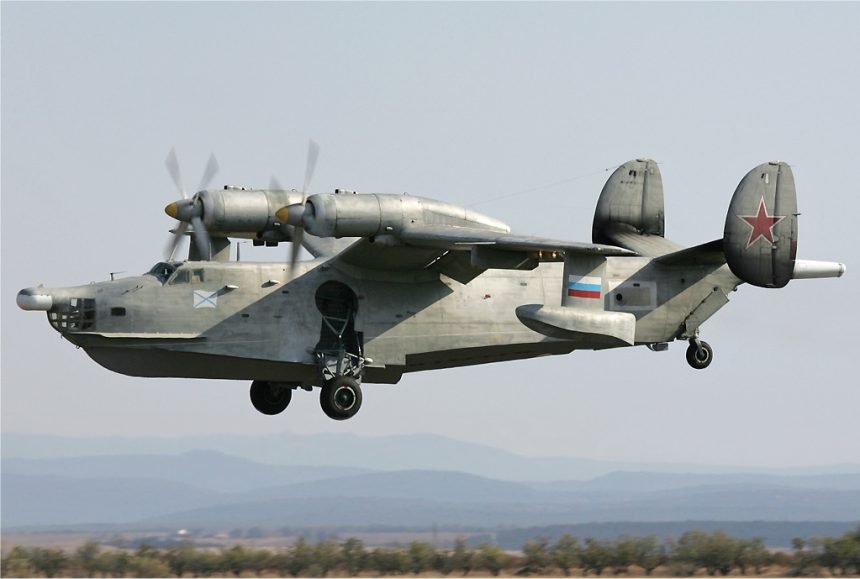The British Typhoons have made an interesting close encounter yesterday: a quite rare Be-12 Chaika.
On Aug. 25, two Royal Air Force Eurofighter Typhoon jets in QRA (Quick Reaction Alert) at the Romanian Mihail Kogalniceanu Air Base were scrambled to carry out VID (Visual Identification) on two Russian aircraft flying over the Black Sea in what was the third time the RAF jets have been scrambled to intercept Russian aircraft last week.
The first was a quite “standard” AN-26 tactical transportation aircraft, a type of aircraft NATO jets providing enhanced air policing in northern or eastern Europe have often intercepted, whereas the second was a rarer and much interesting Be-12 Chaika (NATO reporting name: Mail) short-range ASW (Anti-Submarine Warfare) and maritime SAR (Search And Rescue) amphibian.
In describing the “incursions”, Flight Lieutenant Ben, a Typhoon pilot on 1 (Fighter) Squadron, attached to 135 Expeditionary Air Wing, said in a public release:
“We launched both QRA aircraft to counter an incursion into the Romanian airspace from the East over the Black Sea by a suspected Russian aircraft. We were able to intercept and identify it as a Russian An-26 CURL and escorted it clear of the Romanian airspace. The first response was immediately followed by another suspected Russian aircraft over the Black Sea. Both Typhoons escorted it clear of Romanian airspace, the whole event was conducted safely and professionally on both sides.”
Noteworthy, unlike most of the recent interceptions, the latest ones by the RAF “Tiffies” were not conducted in international airspace, but based on the official RAF statements inside a NATO (Romania’s) airspace. Most probably, the statement referred to the Romanian FIR (Flight Information Region), rather than the Romanian sovereign airspace.
Anyway, four RAF Typhoons are deployed to Romania as part of Operation Biloxi, NATO’s enhanced Air Policing mission to bolster the alliance’s eastern airspace. The British interceptors have been quite busy intercepting Russian aircraft lately. For comparison, during last year’s deployment, the RAF jets were scrambled only once, for someone a sign the Russians are testing RAF response in the area.

The Be-12 was almost certainly operating out of the Crimean air base of Kacha, where most of the remaining Russian high-wing amphibian aircraft are based: according to most sources no more than 6 examples were in active service at the end of 2015. In his “Russia’s Warplanes: Volume 2”, Piotr Butowski reported that in Feb. 2015, unexpectedly, the commander of the Russian Naval Aviation declared that the Beriev fleet would be modernised even though the scope of the upgrades had not been specified yet. According to Butowski, about a dozen aircraft were suitable to return to service.

In January 2018, TASS News Agency reported that the decision to modernize the aircraft had finally obtained a go-ahead, with the technical specifications drafted as well as the document to launch the R&D works to upgrade the onboard systems: mainly, ASW sensors, radio communication equipment and armament (torpedoes and depth bombs). How many aircraft will be upgraded and when, it’s not clear.
In the meanwhile, the Soviet-era aircraft with the peculiar V-shaped arched wing (to keep the propellers clear of the water), H-type tail unit and the glazed nose remains one of the rarest and coolest Russian Navy aircraft. The “Mail” amphibious aircraft has a maximum speed of 530 km/h, a maximum range of 3,600 km and a patrol endurance at 500 km from base of 3 hours.
Top image: File Photo of a Be-12. Credit: Dmitriy Pichugin/Wiki









